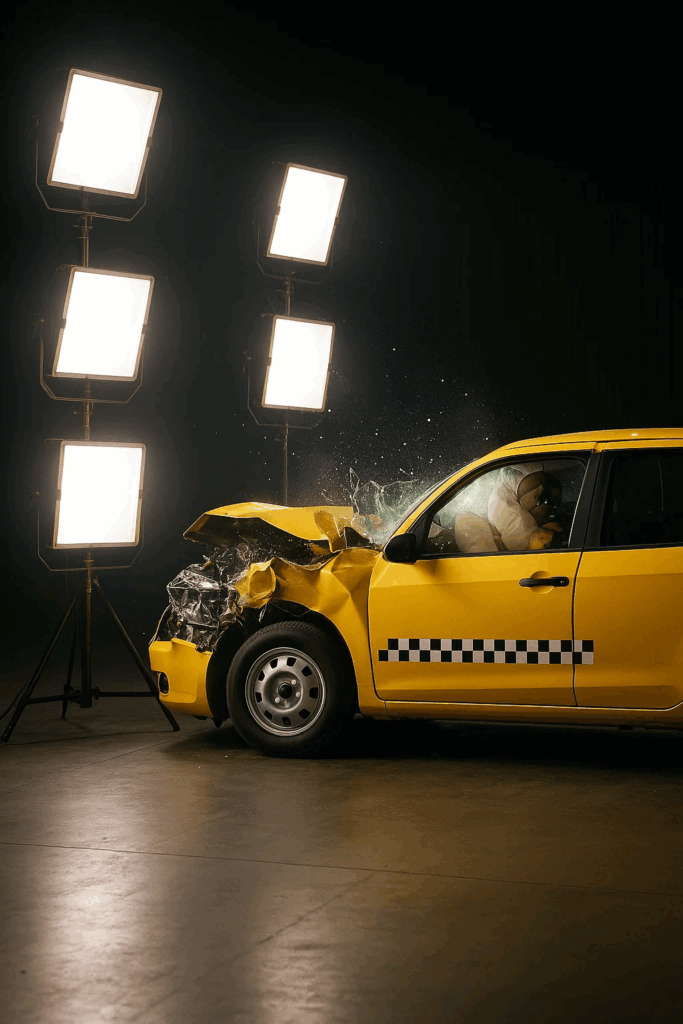High-speed photography is a specialized technique used to capture events that occur too quickly for the human eye to perceive. From a hummingbird’s fluttering wings to the shattering of glass in slow motion, this technique has allowed us to observe, analyze, and appreciate the minute details of rapid phenomena. Central to the success of high-speed photography is lighting. Without precise, high-intensity, and flicker-free illumination, even the most advanced high-speed cameras would fall short. This article explores the origins, evolution, applications, and technical requirements of high-speed photography lighting and the vital role it plays across multiple industries.
The roots of high-speed photography can be traced back to the 19th century. One of the earliest pioneers, Eadweard Muybridge, famously used sequential photography to study animal locomotion in the 1870s. In the 1930s, Harold “Doc” Edgerton revolutionized the field by introducing the electronic stroboscope, capturing bullets in flight and milk drops splashing with unprecedented clarity.
In these early stages, lighting was a limiting factor. Photographers relied on bright flashes or explosive powder to provide enough illumination. These methods were often dangerous, inconsistent, and impractical for repeatable scientific analysis.
With the advent of digital imaging and rapid improvements in sensor technology, high-speed photography began to flourish. Cameras capable of capturing tens of thousands of frames per second (fps) became commercially available, driving demand for equally capable lighting solutions.
Key Developments in Lighting:
| Era | Lighting Type | Frame Rate Capability | Limitations |
|---|---|---|---|
| 1930s-50s | Flash powder / Xenon strobe | ~1000 fps | Dangerous, low repeatability |
| 1980s | Xenon gas flash tubes | ~10,000 fps | Bulky, high power consumption |
| 2000s | High-intensity halogen | ~20,000 fps | Heat generation, short lifespan |
| 2010s-Present | High-power LED lighting | 100,000+ fps | Requires heat management and precision optics |
Modern LED systems offer flicker-free performance, instant on/off control, and modular designs, making them the preferred choice for high-speed applications today.
Directors and cinematographers use high-speed cameras for dramatic slow-motion scenes. Proper lighting ensures each frame maintains consistent exposure and color accuracy.
Coaches and scientists analyze motion mechanics in athletes using high-speed imaging. Lighting enables real-time capture of subtle muscle movements and equipment interactions.
From fluid dynamics to ballistic studies, scientists rely on high-speed imaging to understand rapid physical processes. Consistent lighting ensures data accuracy.
Manufacturers use high-speed cameras to inspect fast-moving products on assembly lines. Lighting helps detect microscopic flaws that occur in milliseconds.
In this field, high-speed imaging supports missile testing, shockwave analysis, and component failure research. Lighting must withstand extreme conditions while delivering stable output.
Capturing high-speed footage presents unique challenges:
Proper lighting enhances image clarity, eliminates motion blur, and ensures data is usable. Inadequate lighting can lead to underexposed, noisy, or unusable footage, especially at frame rates exceeding 10,000 fps.

High-speed photography lighting systems must be engineered with precision. Essential features include:
| Feature | Importance |
| Flicker-Free | Prevents frame inconsistencies |
| High Lumen Output | Ensures visibility at short exposures |
| Long Lifespan | Reduces replacement cost and maintenance |
| Compact Size | Ideal for mobile or field setups |
As high-speed imaging becomes more critical across industries, the demand for professional-grade lighting continues to rise. Lighting systems must meet industry standards and be customizable based on the environment and camera type.
At AUYSMAS, we develop lighting solutions that cater to these professional requirements:
Our team works closely with clients to ensure optimal performance for each application.
Lighting plays a foundational role in high-speed photography. As camera technology evolves, so too must lighting systems. With advances in LED performance, control systems, and thermal design, professionals can now capture stunning, clear, and usable images at speeds once thought impossible.
AUYSMAS continues to innovate in this field, delivering powerful, reliable, and efficient lighting solutions for high-speed photography. Whether you’re filming cinematic slow-motion, analyzing athletic performance, or conducting scientific tests, our lighting technology ensures you never miss a detail.
Contact us today to learn more about our high-speed shooting lights and how they can elevate your project.
Get in touch for free lighting customization